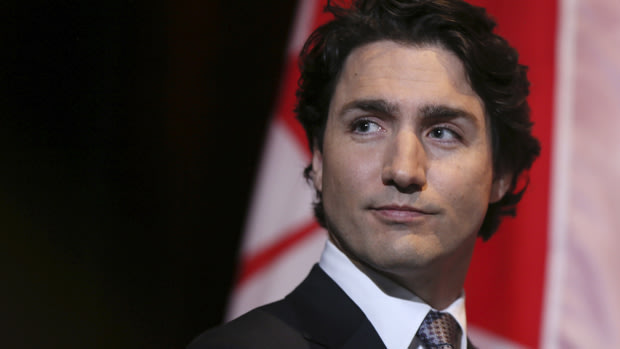Be Yourself, but Carefully
by Lisa Rosh and Lynn Offermann
“Authenticity” is the new buzzword among leaders today. We’re told to bring our full selves to the office, to engage in frank conversations, and to tell personal stories as a way of gaining our colleagues’ trust and improving group performance. The rise in collaborative workplaces and dynamic teams over recent years has only heightened the demand for “instant intimacy,” and managers are supposed to set an example.
But the honest sharing of thoughts, feelings, and experiences at work is a double-edged sword: Despite its potential benefits, self-disclosure can backfire if it’s hastily conceived, poorly timed, or inconsistent with cultural or organizational norms—hurting your reputation, alienating employees, fostering distrust, and hindering teamwork. Getting it right takes a deft touch, for leaders at any stage of their careers.
Consider Mitch, the director of a newly established department at a major U.S. university, who was responsible for negotiating and maintaining links with other educational and research institutions. Attempting to break the ice in his first meeting with the dean of a prominent college, he mentioned how excited he was to be at the dean’s school, because he’d wanted to attend it but had been rejected. He got a cold stare in response, and the meeting ended without an agreement. Mitch thought his comment was friendly and self-deprecating; now he realizes that it probably lowered his standing with the dean, who may have thought he was either challenging the admissions process or seeking pity. Mitch learned that such revelations must be skillfully deployed.
In our years of studying and consulting on leadership development, team building, and communication skills, we’ve come across hundreds of cases like this. Drawing on them and on more than four decades’ worth of research in social and organizational psychology, we now have some lessons to share. Here we look at the common mistakes executives make when they’re trying to be authentic and offer a five-step plan for moving toward more-effective self-disclosure.
Where Leaders Slip
Authenticity begins with self-awareness: knowing who you are—your values, emotions, and competencies—and how you’re perceived by others. Only then can you know what to reveal and when. Good communication skills are also key to effective self-disclosure; your stories are worthwhile only if you can express them well. We typically encounter three types of executives whose lack of self-knowledge causes their revelations to fall flat—oblivious leaders, bumblers, and open books—and two types who fail because they are poor communicators: inscrutable leaders and social engineers. (However, people often fit into more than one category at least some of the time.)
Oblivious leaders don’t have a realistic view of themselves and thus reveal information and opinions in a manner that appears clueless or phony. Take Lori, the director of sales and business development for a global software company. She sees herself as an inclusive, participatory, and team-oriented manager and likes to tell stories about her time as a junior staff member and how much she valued having a voice in decisions. But her subordinates consider her to be highly directive and thus find her anecdotes disingenuous. As one employee puts it, “I don’t care if you make every decision, but don’t pretend to care about my opinion.”
Bumblers have a better understanding of who they are but not of how they come across to others. Unable to read colleagues’ social cues, including body language and facial expressions, they make ill-timed, inappropriate disclosures or opt out of relationship building altogether. This behavior is particularly prevalent in cross-cultural situations when people aren’t attuned to differing social norms. A case in point involves Roger, a partner in a multinational consulting firm who was assigned to help boost market share for the firm’s newly formed Asia-Pacific office. Asked to coach a team that had recently lost an important account, he decided to share a story about losing his first client. In the United States, anecdotes about his own mistakes had always made his subordinates feel better. But Roger’s Asian colleagues were dismayed that their new leader would risk his honor, reputation, and influence by admitting weakness.
You don’t need to leave your country to bumble. Take Anne, the general manager of a cafeteria for an international technology company. An extrovert who knows herself well, she shares her experiences and perceptions freely. This can be effective when she’s talking to her staff, but it’s less so with outsiders. For example, when an HR manager recently complimented her on the catering she’d coordinated for an in-house awards ceremony, Anne thanked him and went on to disclose that she’d been concerned because the company had come close to outsourcing its food service. Instead of seizing an opportunity to secure more internal business for her beleaguered cafeteria, she diminished her status and worried team members who overheard the exchange.
Open books talk endlessly about themselves, about others, about everything; they’re too comfortable communicating. So although colleagues may seek them out as sources of information, they ultimately don’t trust them. Consider Jeremy, an outgoing senior manager with a sharp mind but a string of failed management consulting engagements. When people first meet him, his warmth, intelligence, and ability to draw them into conversation make them feel as if he were an old friend. But his aggressive familiarity soon wears thin (“I know more about his wife than I know about my own,” one former colleague says), and his bosses question whether he’s discreet enough for client work. Indeed, Jeremy was asked to leave his most recent job after he used a key meeting with a prospective client to detail work he’d done for several others, not only outlining their problems but identifying them by name.
Inscrutable leaders are at the other end of the spectrum: They have difficulty sharing anything about themselves in the workplace, so they come off as remote and inaccessible and can’t create long-term office relationships. Aviva is a registered dietician who expanded her private practice into a full-service nutritional guidance, exercise training, and health products company. Although she’s talented and passionate, she has difficulty retaining employees, because she fails to communicate her enthusiasm and long-term vision. Recently featured on a panel of female entrepreneurs, she opted to present a basic annual report and outline her sales strategy rather than to captivate the audience with a personal story, as others had done. Afterward, the other panelists were flooded with résumés and business cards; Aviva had lost out on the significant benefits that can come from appropriate self-revelation.
Finally, social engineers are similar to inscrutable leaders in that they don’t instinctively share, and to bumblers in that they often have difficulty reading social cues, but their chief shortcoming is the way they encourage self-disclosure within their work groups. Instead of modeling desired behaviors, they sponsor external activities such as off-site team building. Andrew, for example, is a unit head at a financial services firm with an ultracompetitive corporate culture. Every year, he sends his team on a mandatory retreat run by an outside consultant who demands personal revelations in artificial settings. Yet Andrew never models or encourages self-disclosure in the office—and he looks the other way if employees exploit colleagues’ self-revealed weaknesses to get ahead. When we asked one of Andrew’s direct reports about the most recent group getaway, she said, “I learned that I hate my colleagues—and my manager—even more than I thought.”
Executives who make any or all of these mistakes may appear to be simply incompetent. But their cautionary tales are much more common than you might think, and we can all learn from them. In our work we’ve seen even the most self-aware, talented communicators err in how, when, or to whom they reveal a personal story. Everyone should understand best practices in self-disclosure.
A Five-Step Path
Let’s return to Mitch, who blundered with the college dean. Chastened by that experience, he vowed to get better at revelation. Since then his disclosures have proved far more effective, allowing him to establish many enduring partnerships. What makes him so successful now? First, he’s self-aware: He knows who he is, where he came from, where he’s going, and what he believes in. He encourages colleagues to give him feedback, and he’s enrolled in several developmental training programs. Second, he communicates cautiously, letting the task at hand, along with environmental cues, dictate what to reveal when. For instance, he was all business at one meeting with a potential partner until she voiced a concern about whether her students could assimilate at his university. Sensing a critical moment in the negotiation, he decided to tell her about the challenges he’d faced in an exchange program during college—trying to learn another language, make friends, and adjust to the curriculum. The story was personal and heartfelt but also demonstrated an understanding of his counterpart’s concern and a commitment to addressing it. He deepened the relationship and sealed the deal.
Mitch arrived at effective, authentic self-disclosure by following five steps:
1. Build a foundation of self-knowledge. You can learn about yourself in many ways, but the best approach is to solicit honest feedback—ideally a 360-degree review—from coworkers and follow it up with coaching. In Why Should Anyone Be Led by You? (Harvard Business School Press, 2006), Rob Goffee and Gareth Jones suggest exploring biography. You might consider your upbringing, your work experiences, and new situations, such as volunteer opportunities, that test your comfort zone and force you to reflect on your values. You might also consider your personal management philosophy and the events and people who shaped it. We start our executive coaching engagements with a detailed interview that essentially walks clients through their personal and professional histories, their successes and failures, and the lessons they’ve drawn as a result. These exercises can help you choose which stories are most appropriate to share with others.
2. Consider relevance to the task. Skillful self-disclosers choose the substance, process, and timing of revelations to further the task at hand, not to promote themselves or create purely personal relationships. In fact, we found in our earlier work that team development efforts often fail because they try too hard to foster intimacy rather than focusing on task-relevant disclosure and social cohesion. Be clear that your goal in revealing yourself at work is to build trust and engender better collaboration and teamwork, not to make friends—though that may happen. So before you share personal information, ask yourself whether it will help you do your job. Is it germane to the situation? Will your staff get a better understanding of your thinking and rationale? If not, you might want to save the story for a coffee date with friends. If your goal is simply to develop rapport with employees, you can find safer ways to accomplish that—such as bonding over a beloved sports team, a new movie, or a favorite restaurant.
3. Keep revelations genuine. This should be a no-brainer, but we’re amazed at how often we hear about managers who fabricate tales. Take Allan, who recently stepped down from his position as the associate director of marketing and communications for a regional hotel chain. In both presentations and small group discussions, he would cite examples of how he had successfully used social media, video on demand, and search engine optimization in his prior position at a premier boutique hotel. The problem was that he held that job in the early 1980s, before those technologies were widespread. Allan did have extensive social media marketing experience, but it had come through his volunteer church work; he fudged the details in an effort to bond with his younger colleagues. Eventually they found out, and Allan lost credibility, which ultimately led to his departure from the company. Making up stories or exaggerating parts of a narrative to fit the situation may seem like a good idea, but it is easily discovered and can do a lot of harm. Instead try to find real if less-than-perfect disclosures that still capture the emotions of the situation and convey empathy. If, for example, Mitch had never been part of an exchange program, he might have told his potential partner that he was a father and therefore recognized the importance of assuaging young people’s fears in new situations.
4. Understand the organizational and cultural context. Considerable research has shown that people from individualistic societies, such as the United States and India, are more likely to disclose information about themselves and expect others to do the same than people from collectivist societies, such as China and Japan. Thus Roger’s Asian teammates might have been put off by his readiness to share a personal story, regardless of its content. Make an effort to investigate national and organizational norms about sharing so that you’ll know when it’s best to keep quiet. In any context, but especially one new to you that involves teammates from other countries, companies, or functions, you should talk to respected insiders about how people operate and what level of candor is expected. HR personnel and group leaders may be able to provide this information, but you can also test the waters with task-relevant self-disclosure to see how people respond. And you can look for cues such as eye contact and others’ attempts to share or solicit stories.
5. Delay or avoid very personal disclosures. Intimate stories strengthen relationships; they don’t establish them. Sharing too much personal information too quickly breaks all sociocultural norms of behavior, making one appear awkward, needy, or even unstable. That was Helen’s mistake when she was asked to introduce herself at the cross-site launch of a training program at her home health care agency. Exhausted after a sleepless night with her sick baby, she shared that experience in her introduction, to the discomfort of her audience. “They wanted to know about my education and industry background, and instead I spoke graphically about baby throw-up,” she recalls. “It took me a few months after that to reestablish credibility.” This doesn’t mean you have to wait years before telling colleagues anything about your personal life. You just need to have spent enough time with them to develop a foundation of trust and to learn organizational norms. First develop common objectives, delineate goals and roles, and demonstrate credibility and trustworthiness through your work. Take careful note of how open others are before offering significant disclosures of your own. In some workplaces you will eventually find it safe and helpful to share; in others you’ll realize it’s extremely unwise to do so.
These five steps should help you avoid some of the pitfalls we’ve outlined and become a more effective leader. Remember to think carefully about your motives and likelihood of success. (See the exhibit “When—and When Not—to Share.”) Self-disclosure is a valuable managerial tool, but it must be used judiciously. What stories do you have to tell, and who needs to hear them?







